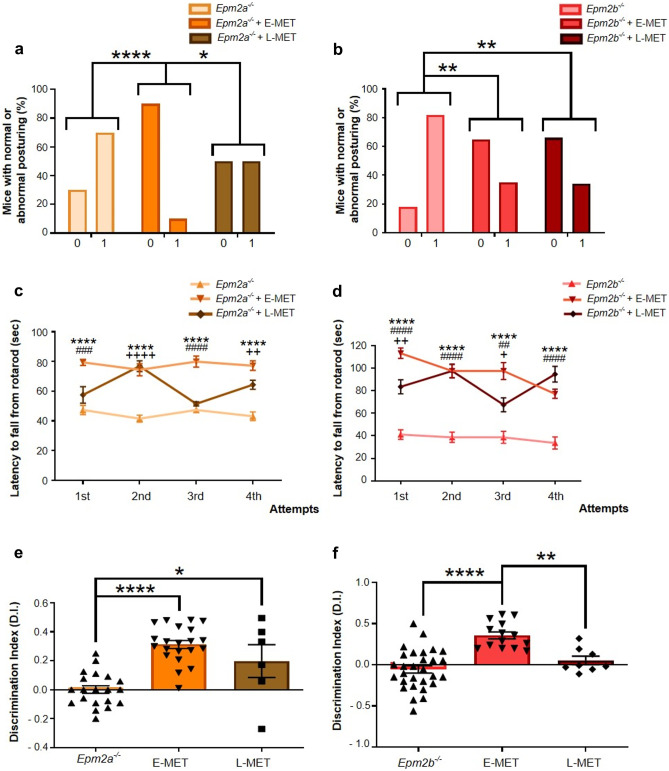Fig. 2.
E-MET outperforms L-MET effect in ameliorating the behavioral decline in adult Epm2a−/− and Epm2b−/− mice. We evaluated the improvements due to E-MET in the percentage of animals showing normal or altered posture (a, b), motor coordination (c, d), and memory deterioration (e, f). In the abnormal posturing test (TST), two different scores were assigned. The animal was graded as 0 when both hind limbs were fully extended, which is considered a normal posture. When one or both hind limbs were intermittently or continuously bent close to the body, the mouse was scored as 1, which is defined as an abnormal posture. In the motor coordination test (rotarod), only the latency to fall from the cylinder recorded during the four attempts in the test sessions is shown. When data are shown as a percentage, a Fisher’s exact test was performed between experimental groups. When data are shown as a mean ± SEM, a one-way ANOVA test was performed with a Turkey’s multiple comparisons test between experimental groups. *p < 0.05; **p < 0.01; ***p < 0.001; ****p < 0.0001. Statistical differences between groups in figures c and d are shown as * for Epm2a−/− vs Epm2a−/− + E-MET or Epm2b−/− vs Epm2b−/− + E-MET; # for Epm2a−/− vs Epm2a−/− + L-MET or Epm2b−/− vs Epm2b−/− + L-MET; + for Epm2a−/− + E-MET vs Epm2a−/− + L-MET or Epm2b−/− + E-MET vs Epm2b−/− + L-MET

